How to Check if Your Cat is Dehydrated 🐱💧

How to Check if Your Cat is Dehydrated? ![]()
Cats, with their intriguing history and unique habits, are fascinating creatures. However, some of these habits, particularly those related to hydration, can lead to health problems.
Dehydration is a common issue among cats, often resulting from their natural aversion to drinking water and their overall discerning tendencies.
In this article, we’ll explore how to identify and address cat dehydration, ensuring your feline friend stays healthy and hydrated.
What Causes Dehydration in Cats? 🐈💧
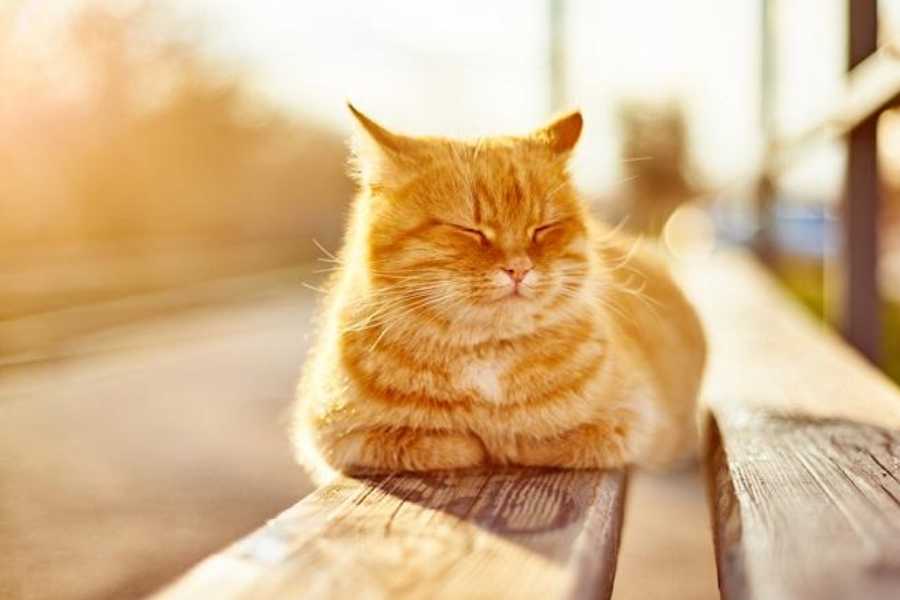
Dehydration occurs when fluid levels drop below normal. This can be due to reduced water intake or increased fluid loss. Overheating in hot weather, increased activities, or a bout of vomiting or diarrhea can all result in fluid loss in cats.
Many owners don’t see their cats drinking water and assume they are not sensitive to water loss, but they are. Even though they may not drink fluids until they’ve lost as much as 8% of their bodies’ water stores.
That’s why it’s very important to give your cat access to fresh water at all times to maintain proper hydration. ![]()
How Much Water Does My Cat Need? 🐱🥤
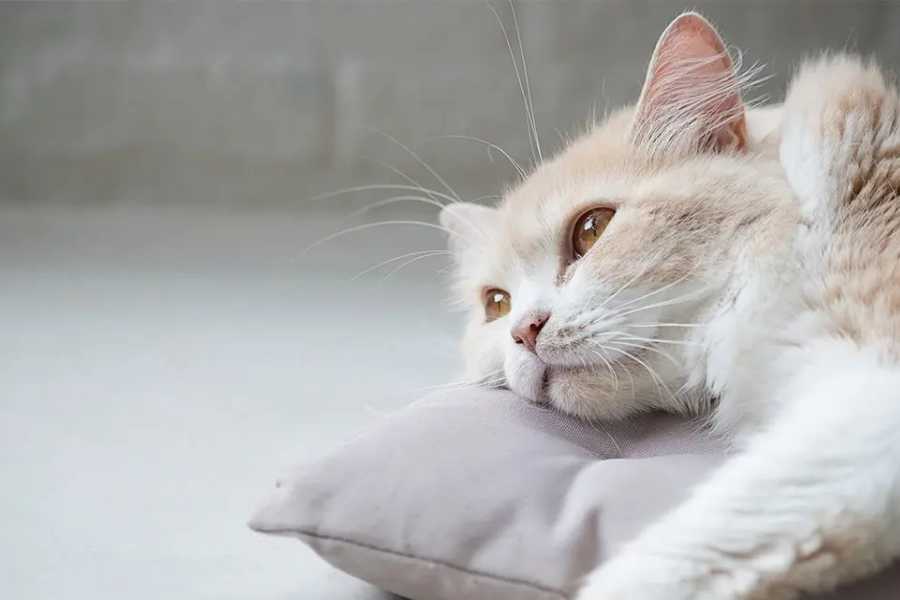
As your cat consumes more calories and produces more metabolic waste, they need more water to maintain their body temperature. In general, an adult cat should drink roughly the same amount of water in milliliters as the number of kilocalories eaten per day.
Dry cat food contains 7% to 12% water, while canned cat food measures up to 80% water. Cats who eat only dry food don’t get as much water from their food as those who eat canned food and should always have easy access to clean drinking water to supplement their intake.
The first step in avoiding cat dehydration is to understand how much water your cat should be drinking on average. While your cat’s exact water needs will depend on a number of factors including their size, activity level, and health, a good rule is to aim for at least 3.5 to 4.5 ounces of water per day for every 5 pounds of weight.
Especially in warmer weather, it’s important to ensure that your cat is staying properly hydrated. ![]()
What Can You Do for a Dehydrated Cat? 🐈💦
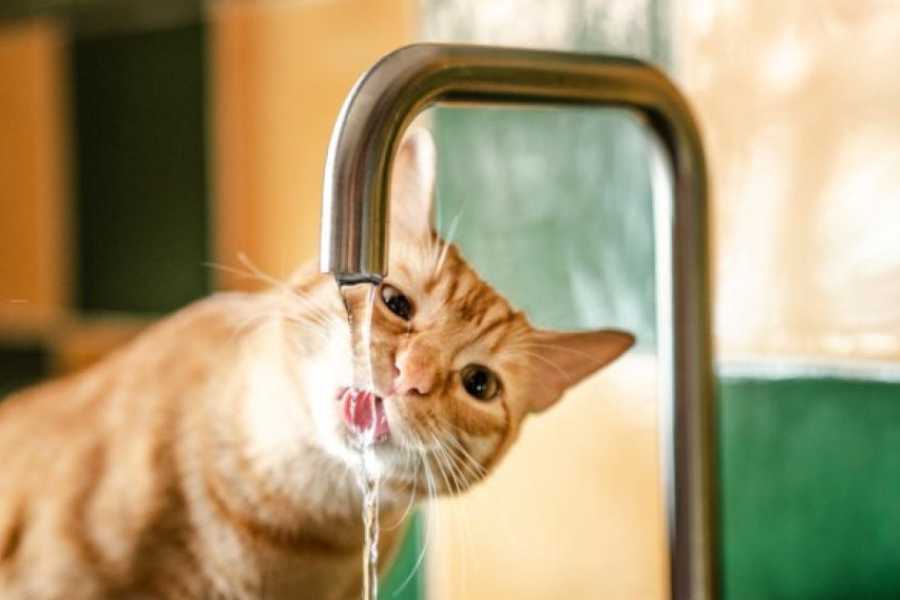
The treatment for dehydration in cats will depend on the underlying cause. Treatment for some of the possible causes may include:
Not eating: If your cat is not eating, it is important to do anything you can to stimulate their appetite. Every cat has different food preferences, making it important to offer a variety of flavors and textures to find something appealing to your cat. Ultimately, you may need to see your veterinarian to determine the underlying cause for their anorexia.
Vomiting: Cats that are vomiting can be difficult to treat at home. You can withhold food and water for a few hours, then begin offering small amounts of water followed by small quantities of food. If your cat does not eat, is lethargic, or the vomiting continues, please call your veterinarian.
Diarrhea: Loose stools are a commonsymptom in cats and when sustained, can cause severe dehydration. It is important to consider the underlying cause and remove it if possible, such as exposure to trash or new treats. Feeding a bland diet can help some cats with diarrhea. Ideally, have your cat evaluated by your veterinarian to help determine and treat the underlying problems.
Increased urination: If your cat is urinating more frequently, please see your veterinarian. Increased thirst with increased urination can be caused by diabetes or kidney disease.
The treatment for dehydration is to supplement the body with fluids. It is often not possible for a sick cat to ingest enough water to adequately correct dehydration. Fluids are typically administered as an injection. The most efficient method for rehydration is through intravenous (IV) fluids.
This requires hospitalization as well as an intravenous catheter. Some cats are treated with subcutaneous fluids at home after an initial diagnosis and treatment. Ask your veterinarian if this is an option and have him or her show you how to administer injectable fluids at home.
If you believe that your cat is dehydrated, please call your family veterinarian or closest emergency clinic. This can be life-threatening and prompt diagnosis of the underlying cause and treatment is critical to your pet’s health and survival. ![]()
Switch to Wet Cat Food 🥫🐱
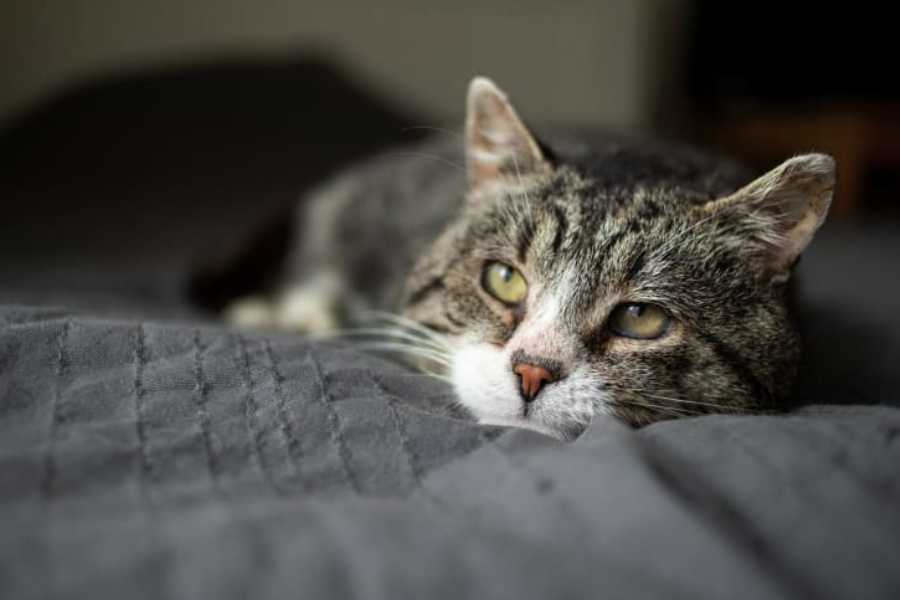
A first step in helping your dehydrated cat get the moisture they need is to switch her to a wet cat food if she’s not eating it already. Canned food diets are so much healthier for cats because their water intake is sufficient just by eating the food. Some cats with urinary issues need even more water than regular wet cat food provides. Adding water to canned food to make it a bisque of sort is recommended. ![]()
Try Tasty Water 💦😺
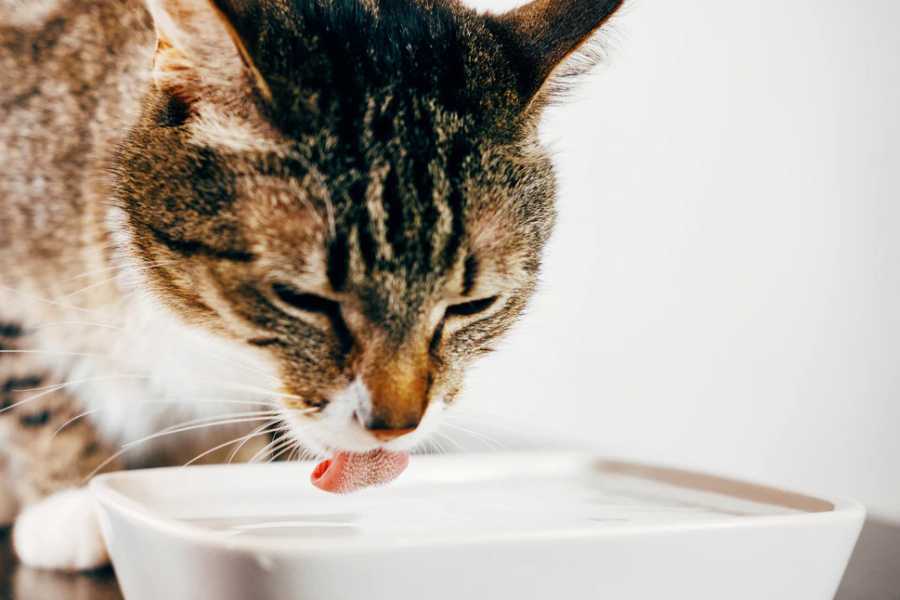
If your cat seems completely uninterested in drinking water from her cat bowl, even though it’s kept fresh and cool, it might be time to get creative. If your cat is not drinking, you can try these methods:
- Stimulate thirst with fresh, clean water. Some cats love to drink out of the sink, bathtub, or shower. Consider encouraging this if your cat is dehydrated.
- Offer low-sodium chicken, beef broth, or tuna juice.
- Some cats love running water and will drink more water from a fountain. There are many commercial cat fountains on the market.
- Mix canned cat food with water to form a gravy. Moisten dry food.
- Some cats enjoy ice cubes in the water bowl. You can also make ice cubes out of chicken broth or tuna juice.
- Offer water in different shapes or types of bowls. Some cats prefer to drink out of pottery and others out of stainless steel bowls. There are also preferences for deep versus shallow water bowls.
Switch Out Your Cat Water Bowl 🥣🔄
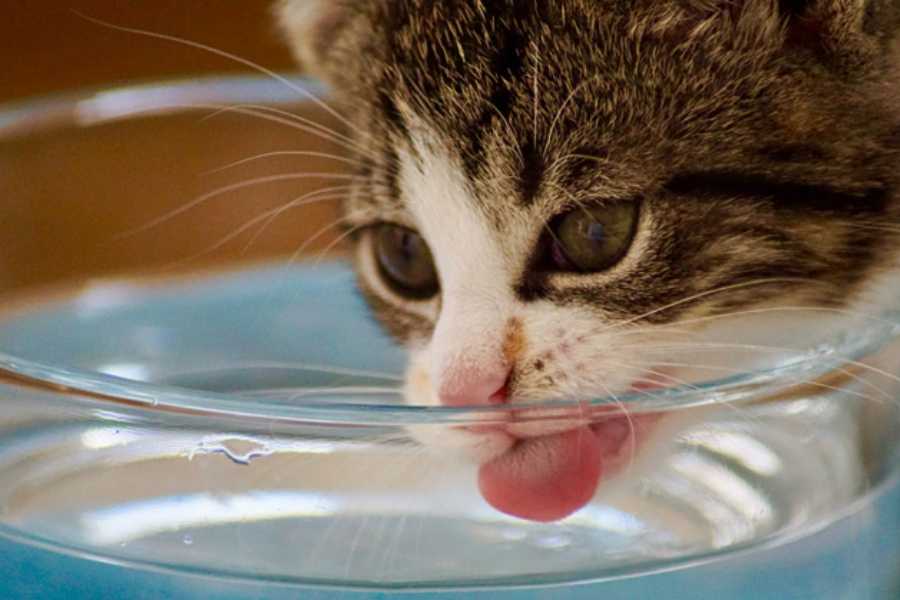
Some cats refuse to drink standing water, no matter how clean or cool you make it. In this case, experts recommend providing a cat water fountain or waterfall-style water dispenser. Some cats are more likely to drink water when it’s presented in new and exciting ways. Here are a few other options to use in lieu of a cat water bowl:
- Give your cat drinking water in a cup rather than a bowl.
- Try something completely different. Cat water bowls come in all sorts of shapes and sizes, as well as of different materials. You can even put the new bowl in a new location in your home.
How to Prevent a Dehydrated Cat🐱💦
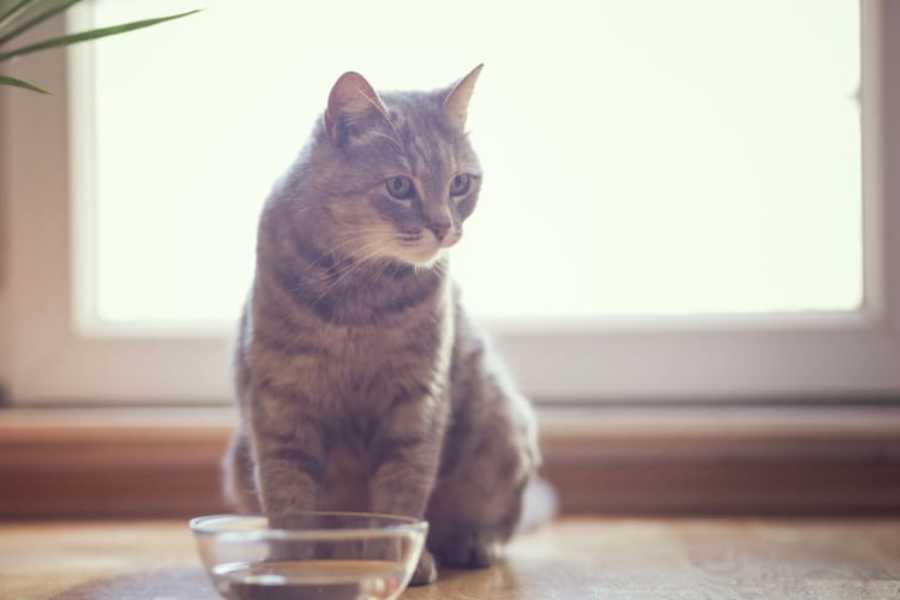
Preventing dehydration in cats is crucial for their overall health. Here are some tips:
- Never leave your cat for days thinking he or she will be okay with a big bowl of water. Someone should check on your cat once or twice a day to ensure that they are eating, drinking, and eliminating normally.
- Give your cat plenty of fresh, clean water daily. Wash the water bowl thoroughly twice a week to ensure it is clean. Ideally, run it through the dishwasher.
- Offer various locations to drink water in the home.
- Monitor output in the litter box. Early recognition and treatment of problems such as diarrhea or abnormally increased or decreased urine production can help prevent dehydration.
- The best way to prevent dehydration is to have your cat examined and treated early if an illness occurs. For sick cats, preventing dehydration may be difficult, but if promptly treated, it can result in recovery.
We hope these tips help you know more about dehydrated cats. Do help people in the comments if you know about more tips to solve cat dehydration. Please subscribe to the all cats thanks for watching. ![]()
Bottom Line
Dehydration in cats is a serious issue that requires immediate attention. By understanding the causes, recognizing the signs, and knowing how to prevent and treat it, you can ensure your feline friend stays healthy and hydrated.
Remember, when in doubt, always consult with a veterinarian. They can provide the best advice and treatment options for your cat’s specific needs.
For more information on cat health and wellness, check out our other articles on why my cat has watery eyes and do I need to visit a vet, why my cat has bad breath: causes and remedies, and what shots are needed for cats: everything you need to know about cat vaccines. Stay tuned to pawsadviser.com for more pet care tips and advice! ![]()
Tags
Share
Table Of Contents
Related Posts
Quick Links

